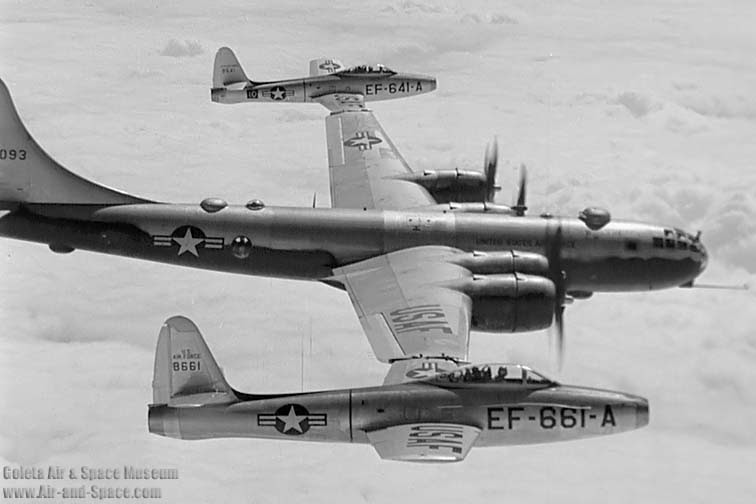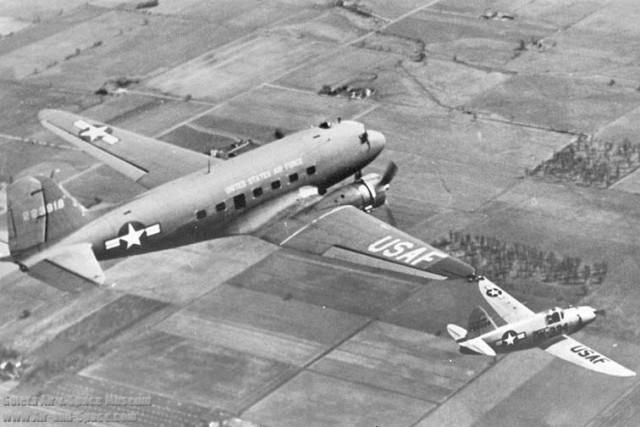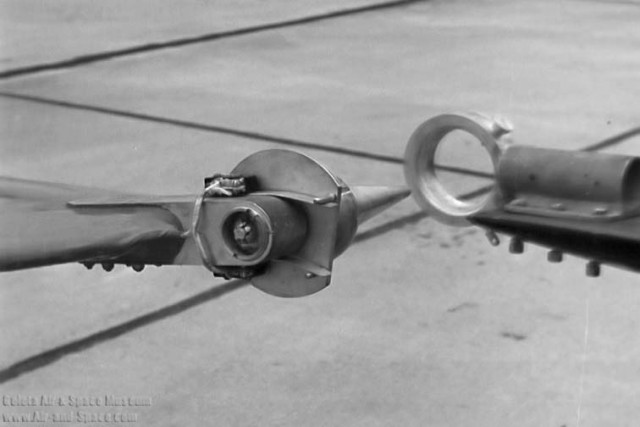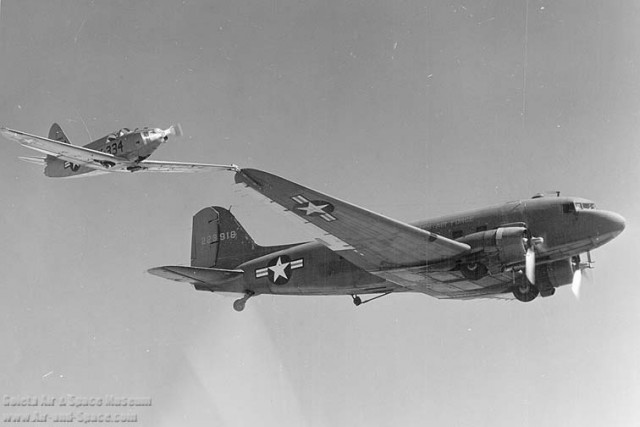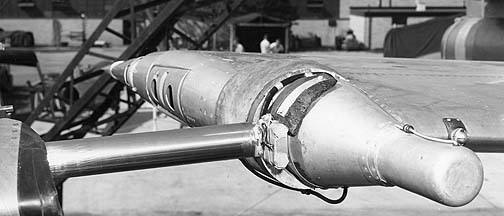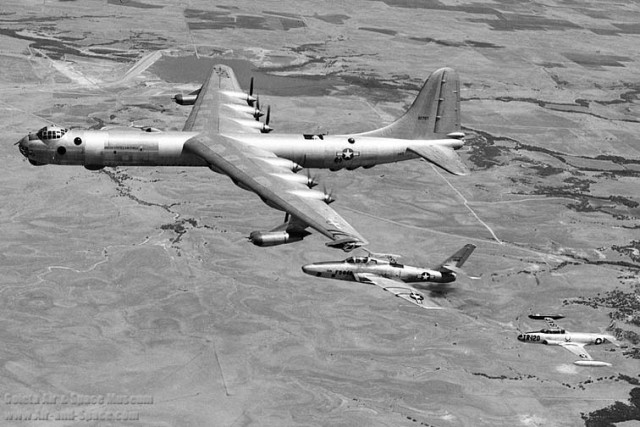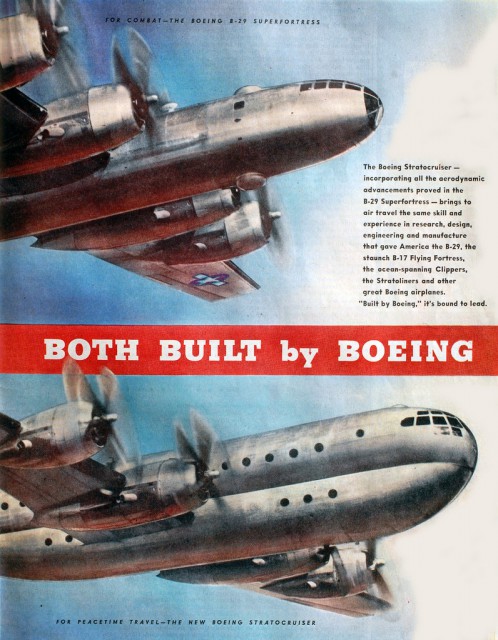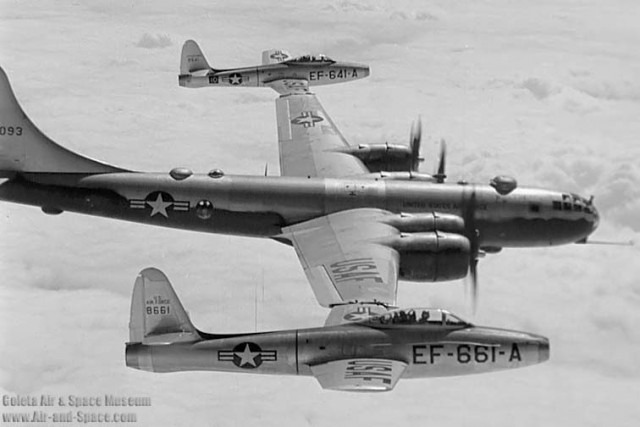
During WWII, the flight range of the USAF long distance bombers made huge leaps forward with every new model that came out, mainly due to the rapid development in aero engine HP output that allowed up scaling to unprecedented dimensions of wings and internal fuel tanks.
While the mid-war (1943) launched B-29 Flying Fortress had a max flight range of almost 6000 miles, the post war B-36 Peacemaker (operational from 1948-1958) could perform a max flight range of 10.000 miles/ 16.000 kms.
In contrast to that development, the first generation of (post war) Jet Fighters were reputed as “Gas -Guzzlers” and all had a extremely short flight ranges. Even the mounting of wing tip tanks did hardly bring any relief that could help those fighters to escort the strategic Bombers on their long intercontinental flights (read to Russia and back).
A novel concept was tested with the good old C-47 Skytrain. As from Aug 1949, Major Clarence E. “Bud” Anderson did remarkable experiments with a system of wing tip coupling of 2 aircraft while in flight. The smaller single seater airplane Culver Q-14 Cadet had a lance mounted on its wing tip and flew that into a ring, mounted on the C-47 wing tip, as such making a coupled pair.
This photo shows the Middle Ages Game style Lance and Ring, that were used on the Q-14 Cadet and the C-47 wing tip, to ease the coupling in flight
The basic idea was to increase the aspect ratio of a wing with more wing surface from another plane, offsetting the drag of the smaller plane. I.e. the smaller plane could fly ‘for free’, as a parasite with the larger plane, with engine shut off.
If one would extend this plan to a long distance Bomber, such plane could tow 2 fighters on its both wingtips, flying as “free wheeling” escorts with engine shut off and only awakening to action if needed with imminent enemy thread. The mother ship would hardly give in on its max range and speed with the towing while it had two fighters in direct support in case hell might break loose with Migs showing up at the horizon. The body guard Jets would simply uncouple and beat the Iwans out of their airspace. After the pounding, they could return to couple again for a drink.
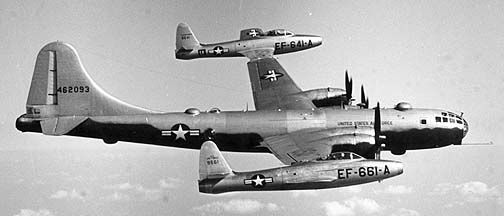
The idea of the flying Aircraft Carrier was born and developed into a steady program of testing.
While the C-47/ Q-14 experiments were successfully continued into 1949, the more serious tests came with Project Tip-Tow, involving the much larger EB-29 Super Fortress ( see first photo) that was coupled to two EF-84 D’s Thunderjets in April 1950.
The coupling mechanism became more complex, electronic auto pilot was added and the coupling lance could transfer jet fuel and oxygen to the ‘slave’ Fighters, keeping their pilots on high alert and their fuel tanks full topped off at any time.
A very serious accident hampered the development when a left wing tip coupling was made between an EB-29A and a F-84D. Right after the autopilot was switched on, the nose went up and the F-84D Thunderjet rolled suddenly to the right over its fixed “hinge” with the mother ship. In that roll, the F-84 turned upside down and hit the outer wing panel of the B-29. Explosive bolts for jettisoning the F-84 went off but too late to release the Fighter from slamming into the Bomber’s outer wing.
The Super Fortress’ left wing folded due to the impact and the combo crashed. Fighter pilot John Davis and 5 crew members in the B-29 were killed in this fatal accident.
Nevertheless, the experiments were to be continued as Project Tom-Tom in 1955/56, this time using the much larger Convair B-36 Peacemaker as the mother ship, with the RF-84 F Thunderflashes as slaves.
In the end , it all came to no avail, as the larger long distance airborne tankers arrived on the scene, that could give the much wanted flight range extension to the thirsty Jet Fighters.
As from 1950, the KC-97 Stratofreighter was the first large scale operated strategic aerial refueling tanker, a variant of the Military Cargo transport C-97. In passenger transport also known as the mighty Boeing Stratocruiser B-377, that was developed straight from the B-29 Super Fortress of WW II fame.
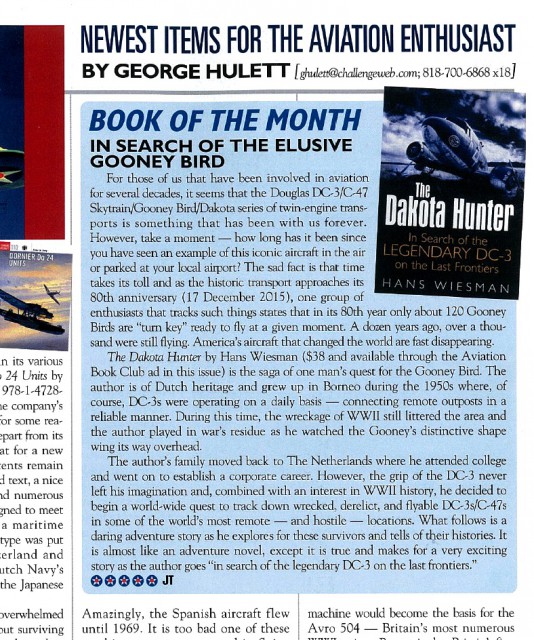
If you are interested to read more of such vintage aviation related stories, may I recommend you my book `The Dakota Hunter`
Published by Casemate USA -UK in May 2015, the book has been selected by the leading US Aviation magazine AIR CLASSICS as the ´Book of the Month` with a 5 star recommendation as `a Must in every Aviation Library` . You can read their review here on their page from their last issue, and just in case you still might have some doubts, you can have a sneak preview into my book with 320 pages and 250 photos.
Please come to my site at www.dc3dakotahunter.com where you can order the book directly with a mouse click at Amazon, Barnes and Noble etc.
